How to Choose a Black Fineliner or Ink for Watercolour: A Review
*This post contains affiliate links to Amazon
Choosing an Ink to Use with Watercolour
Combining watercolour with ink in your paintings can yield some stunning results. However, there are a lot of pens out there, and it may not be obvious which is the best ink for watercolour illustrations.
The aim of this blog post is to give you an idea of what to look for in a fineliner or ink so that you can apply this to your own creations. In this post, I discuss and review 15 pens and inks. While this list is by no means extensive (there are a LOT of pens and inks out there), this is a good starting point for artists looking to incorporate ink into their watercolour paintings.
I definitely plan to add to this as I get more materials too ✌️
With that said, let's first tackle some questions that often come up for artists wanting to use ink with watercolour.
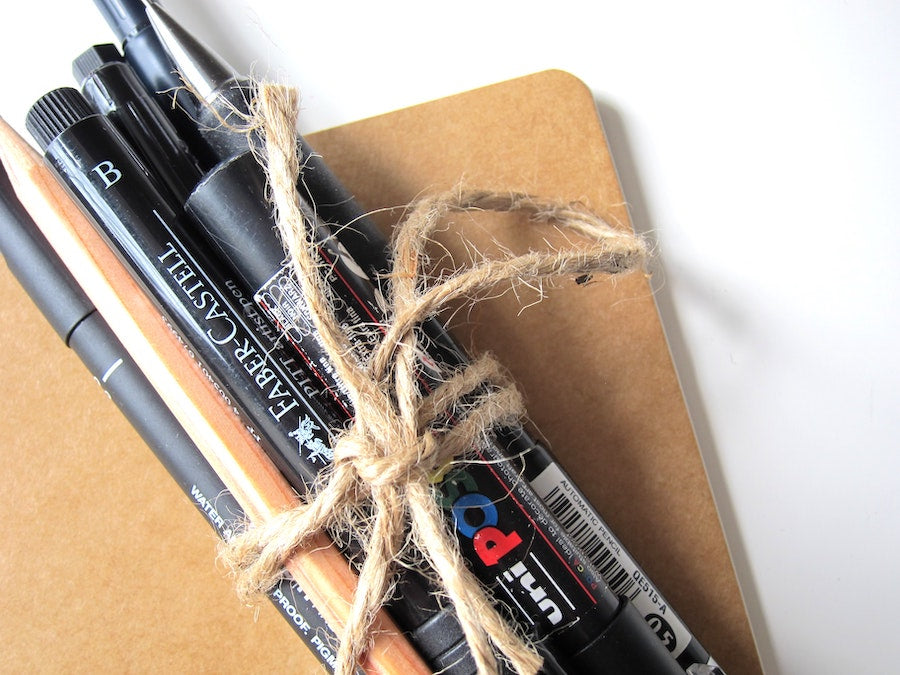
What kind of pen/ink should I use with watercolour?
Pen and Ink Definitions
When looking for a pen or ink to use, there are several words you may come across. These words describe the physical qualities of the ink. I want to define these before we get started so that you understand the review chart I've made for the pens, and so that you know what to look for when you see pens that are not included in this review.
✔️ Waterproof
The ink does not become muted, bleed, or lift off the page when you add water to it. This is, maybe somewhat obviously, what you are looking for when using with watercolours. You will see this word on pens and inks.
✔️ Water-resistant
The ink will resist water when it's dry. Usually requires a longer drying period before water/paint can be applied on top without ink bleeding. This is a more common thing to see on inks, rather than pens.
❌ Water-soluble: if your pen has this written on it, it means the ink is water-based and will run when you add watercolour to it. You can create some fun pen and ink illustrations with this technique, but it doesn't really play well with watercolour if you want it to stay put and not bleed.
✔️ Lightfast
This refers to the stability of the ink when exposed to light. When ink has high lightfastness, the pigment does not fade over time.
✔️ Fade-proof or Fade-resistant
Ink that resists fading over long periods of time and that will not discolour; lightfast.
✔️ Acid-Free
Ink that is above 7 on the pH scale (ie more basic than acidic) and that will not damage paper over time.
✔️ Archival
This refers to ink that is suitable and resistant to water, light, and time, and not damage the paper it has been used on. These inks are lightfast, UV-resistant, waterproof, acid-free, and can are meant to last a long time (ie permanent). If you see this term on a pen, it encompasses most of the definitions here excluding water-soluble.
✔️ Permanent
Ink that is water-resistant and fade-resistant.
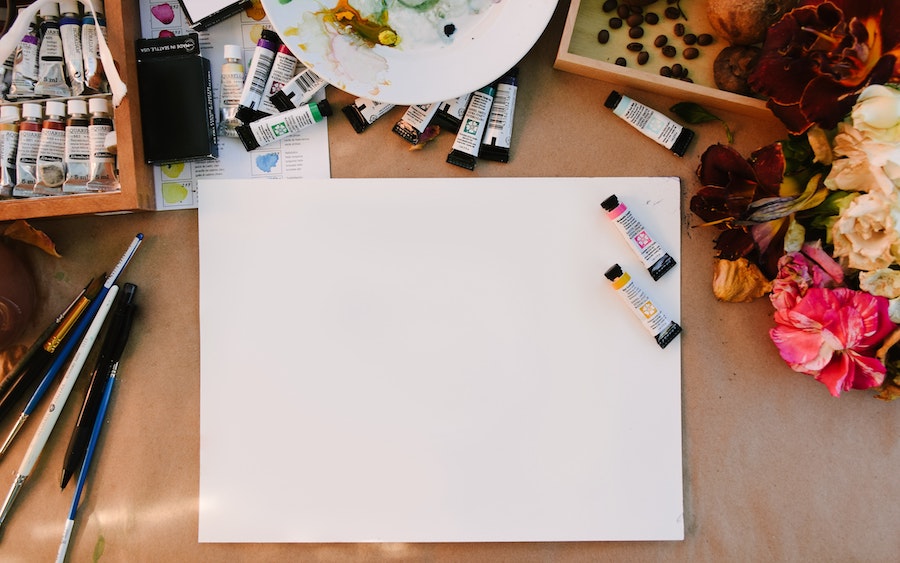
Do you add ink before or after watercolour?
This is completely up to you! It's a personal preference. Some artists (including myself) will choose to ink before adding watercolour, and some artists prefer to ink after they have applied their watercolour.
Here are some reasons to ink before watercolour:
- The pen/fineliner you are using may glide more smoothly on unpainted paper, making it easier to outline
- It's a common approach to illustrative styles
- It makes painting 'inside the lines' a whole lot easier
And here are a few reasons to ink after watercolour:
- The lines are darker and clearer on top of watercolour than underneath
- You do not have access to a waterproof/water-resistant pen
- You want the paint to define where the lines will go, not the other way around
I highly encourage you to play around with both if you are a beginner because you will get a feel for which method suits your style and artwork best.
If you only have access to a water-soluble pen and do not want the lines to bleed, you would need to apply the paint first and then add the ink on top (once the image is completely dry)
In my review below I will actually be including some columns to see what the pens look like with the paint on top and underneath, so we can see if there is a difference.
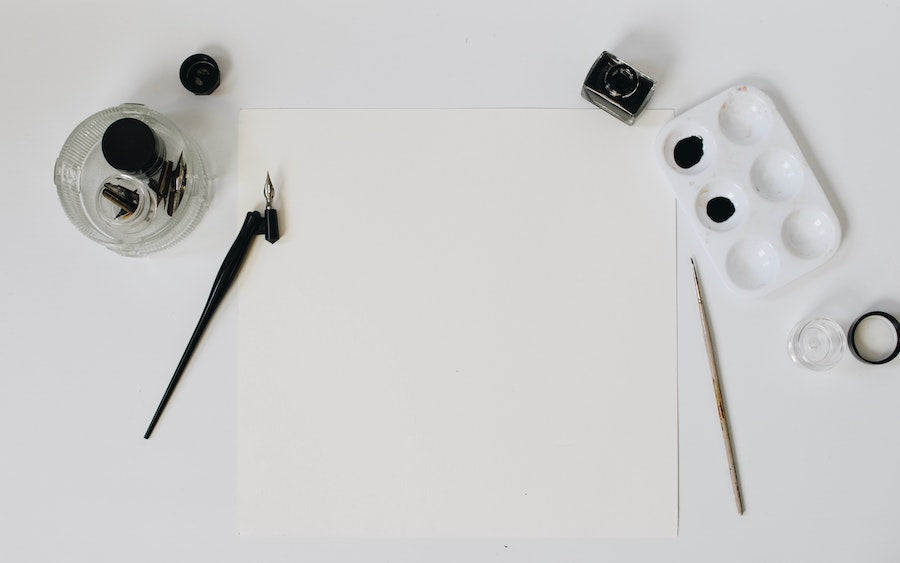
What tool should I use for drawing with inks?
There are several options you can go with if you want to use ink for your paintings instead of a pen.
Since this post is a review of inks and pens rather than a dive into techniques for using them, this section will be brief but I may look at expanding this in the future.
For now, here is a quick list of tools you can use with your India, drawing, or acrylic ink.
Brushes
Brushes are a great option and chances are if you have watercolour paints, you also have watercolour brushes. The type of brush you have will determine what type of lines you can create.
For example, a round brush is great for varying line thickness, whereas a flat or rigger brush could be used to create more consistent lines:
Dip pens
These include nibbed pens (think old school quills with feathers), bamboo pens, and even glass dip pens.
The type of pen you use with your ink will affect what type of lines you get. For example, nibbed pens usually give clean, sharp lines, with line thicknesses that vary depending on the pressure you put on it.
Glass dip pens, on the other hand, do not respond to pressure and create an even, consistent line with a 'nib' that is easy to clean. I have heard a lot of good things from my fellow artists about this option.
I found this useful video by Sketcherbook Skool on How to Use India Ink to be a nice starting place for what tools to use.
Can I use fountain pens with India and acrylic ink?
EDIT: When I initially published this post, my answer was a firm NO - however, using India ink in a fountain pen has been my go-to pen for years. The reason why it's suggested to not use the two together is because fountain pens can get easily clogged from the pigment particles in India and acrylic ink, eventually ruining your pen.
While I'm sure there have been countless fountain pens thrown away for exactly that reason, I always make sure to clean my pen with warm, soapy water when my ink converter (the thing that sucks up the ink) runs empty. I will sometimes add a very small amount (a few drops) of distilled water to my ink if I feel it's not flowing as nicely, but I actually do not really run into issues.
I use a Lamy Safari Pen and Speedball Super Black India Ink, and the two work like a dream together. Since India ink plays nicely with watercolour, I can use it either on top or underneath my paintings, and the lines are rich and dark, and do not fade.
View this pen in action here on my Instagram page!
Of course, please take what I say with a grain of salt. If you are unsure and don't want to risk ruining your fountain pen, stay on the safe side and DON'T mix the two.
Pen and Ink Review
Now it's time to actually review!
You can view a larger image of this chart right here.
A note on this chart:
For this experiment, I am testing all pens on 300 gsm Canson cold-pressed watercolour paper. These pens and inks may yield different results on different types of paper (mixed media, bristol, vellum, etc)
For the erase test, I have two squiggle lines - the top one is the control, and has not been erased, and the bottom one is what the ink looks like after being erased for a few seconds.
I have done the same for the Waterproof column: only the bottom squiggle line has water on it so you can compare what the ink does with and without water applied to it.
I scanned this image in and have kept the texture of the paper and brightness as similar as I could to the physical chart. Your computer monitor or screen may vary in colour/brightness but you should still be able to see the differences between each pen and ink.
To get the most out of this review, I recommend having the chart in a different window so you can compare each pen as you read through the list.
Let's get started!
tl;dr of pen/ink review: recommended pens include the Sakura Pigma Micron Pen and the Winsor and Newton Fineliner pen. For inks, I recommend the Speedball Super Black India ink and the Daler Rowney F.W. Black Ink - both will not disappoint.
Fineliner Pens
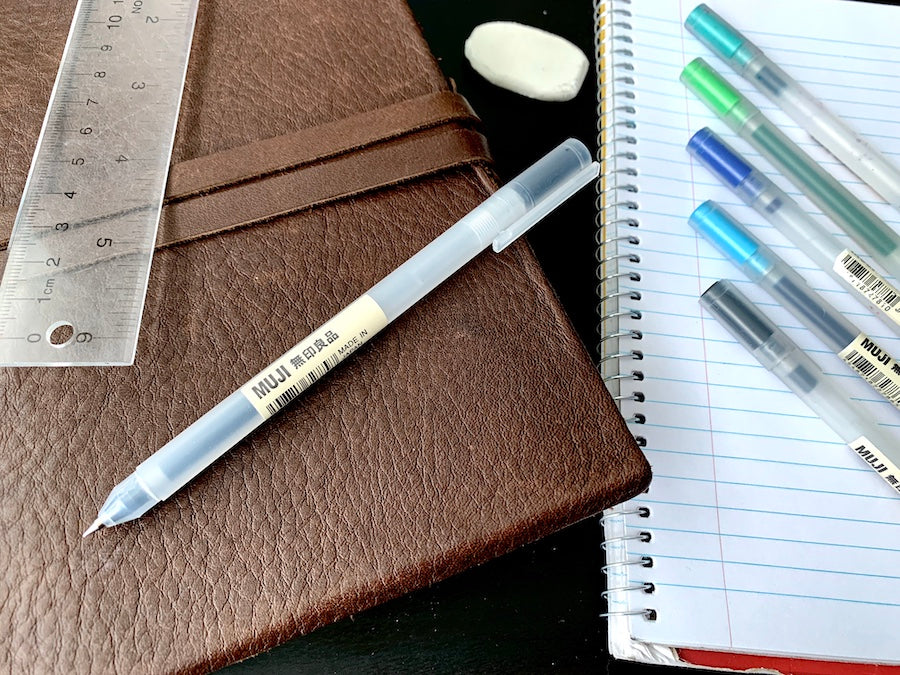
1.
Muji - Gel ink Ballpoint Pen
I love using this pen for journaling, to-do lists, and everyday writing. Sadly, this pen is not lightfast, waterproof or archival, and therefore it doesn't hold up to water at all.
This pen also fades quite a bit from being erased, but it could be an okay option to use on top of watercolour. The gel ink on top of the paint is harder to draw smooth lines with, as you can see my squiggle lines are a little sharp rather than smooth.
Verdict: This is a great everyday pen, but I would avoid using it with watercolour.
2. Staedtler - Pigment Liner
This was one of the pens I used the most when I was first starting out. While it's not the cheapest on the list, they are lightfast and archival.
Although it says it is a waterproof pen, I noticed that when I applied water on top it did bleed a little. This may have been because I didn't wait long enough before applying it. That's fine, just keep in mind if you work fast or are left-handed, you may end up smudging this ink quite often!
The pigment in this pen isn't super black, and it does fade with both erasing and watercolour being applied on top. When I tried a quick pen stroke, it was very streaky. However, this pen looks great on top of the watercolour.
Verdict: after trying out this pen again, I would definitely opt for a different pen to use with watercolour.

3. Sakura - Pigma Micron
I really have so many great things to say about this pen.
It is completely waterproof, the pigment is nice and dark, and there are clear, crisp lines.
The only reason why I have stopped using these pens and opted for ink in my work is that I love a dark, intense black pigment for my paintings, and these pens do fade slightly with erasing whereas the inks do not.
Verdict: I would absolutely recommend the Pigma Micron series to use with watercolour.
4. Sakura - Gelly Roll
I was surprised to learn that this pen is supposedly archival and waterproof, considering it is a gel pen. Testing it with water though, it did bleed slightly and the colour is very muted underneath the paint.
The gel ink doesn't seem to want to run as smoothly as other pens, and it feels like the pen is clogged. It is also not as heavily pigmented/black as other pens I've used, and it smudges heavily compared to other pens.
This pen stood up very well against erasing, and it wasn't streaky when I tried quick, straight lines. The ink looks really good on top of watercolour paint. It's also one of the most affordable pens on this list.
The verdict: If you have the patience to let this ink dry completely before painting over top, it could be a decent pen. However, I think it would be a better pen for using on top of watercolour because the lines are very crisp and clear, and we know it won't fade because it's archival.
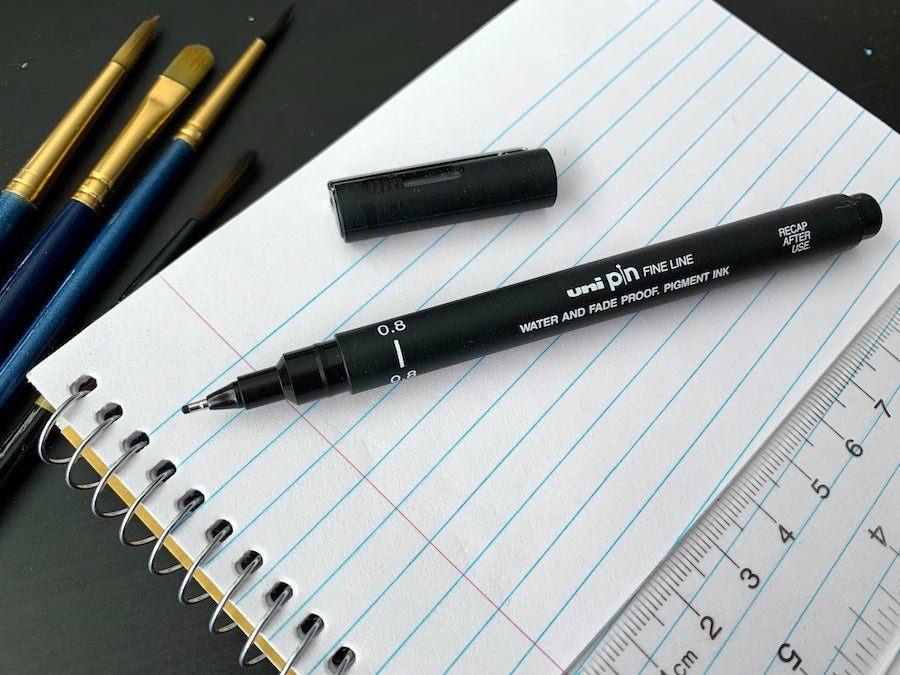
5. Unipin - Fine Line
This is a really solid pen to use with watercolour, though there are some things to notice.
When erased, this ink fades quite a bit, which is a pity because it has a wonderfully dark pigment. It smudges a little, though much less than other pens on this list. It is waterproof, fade-proof and acid-free.
It is completely waterproof, and the pigment actually looks the same both under the watercolour and overtop.
The lines are strong and clean, and the pigment is great.
The verdict: This pen would be excellent if you do not need to erase pencil lines underneath due to how much it erases.
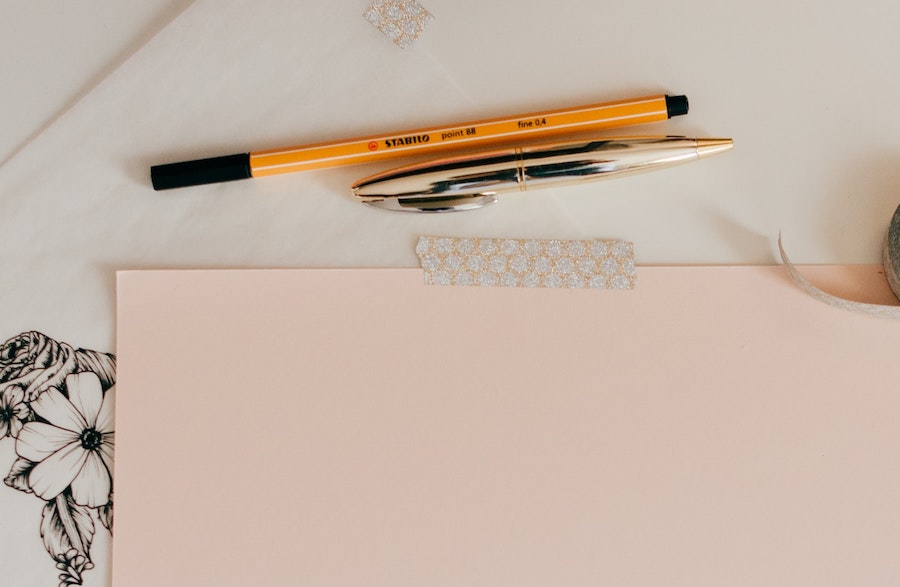
6. Stabilo - Point 88
Very smooth ink, and it is one of the only fineliners to come in 30+ colours. It barely fades when it is erased.
This pen is NOT archival or waterproof, and therefore not too great with watercolours. Just look at how much this ink disappeared under the water! It actually disappears.
Verdict: This pen would be great as a drawing or doodling pen, but it is sadly not a great companion with watercolours.
7. Faber-Castell - Pitt Artist pen
Faber Castell is a solid choice for pens and coloured pencils.
The Artist's pen comes in many different sizes and types, including fineliners, brush pens, and calligraphy pens which makes it great for drawing and illustrating. The ink is archival, lightfast, and waterproof, and uses India ink rather than pigmented ink.
The ink really fades after being erased, which is unfortunate because it is very rich and even pigment. It smudges very easily but it holds up well to water and being painted over.
This pen comes in many different colours (brush types) and is pretty affordable if you get a pack of pens.
Verdict: I love how dark the colour is and how many pen types there are, and these pens would be great if you want to have varying line widths/styles in your work.
8. Sharpie - Fine point
Okay, so these pens are well known to be permanent, but they are not archival as the ink is solvent-based. This type of ink deteriorates paper over time.
The colour is very dark, although it has a slight navy tinge to it compared to the other pens. On the watercolour paper, it does bleed slightly (without water being added) which makes the ink appear to be fuzzy rather than crisp and clear.
It barely smudges at all, which is nice, and it holds up well to water and being painted on.
Verdict: If you want to learn how to use ink and watercolour together without investing money into other pens, this is a decent option. For quick craft projects with kids, they'd be perfect. One thing to keep in mind is that since the ink does bleed on the paper slightly (without watercolour on top), it would be better for paintings that do not require high detail.
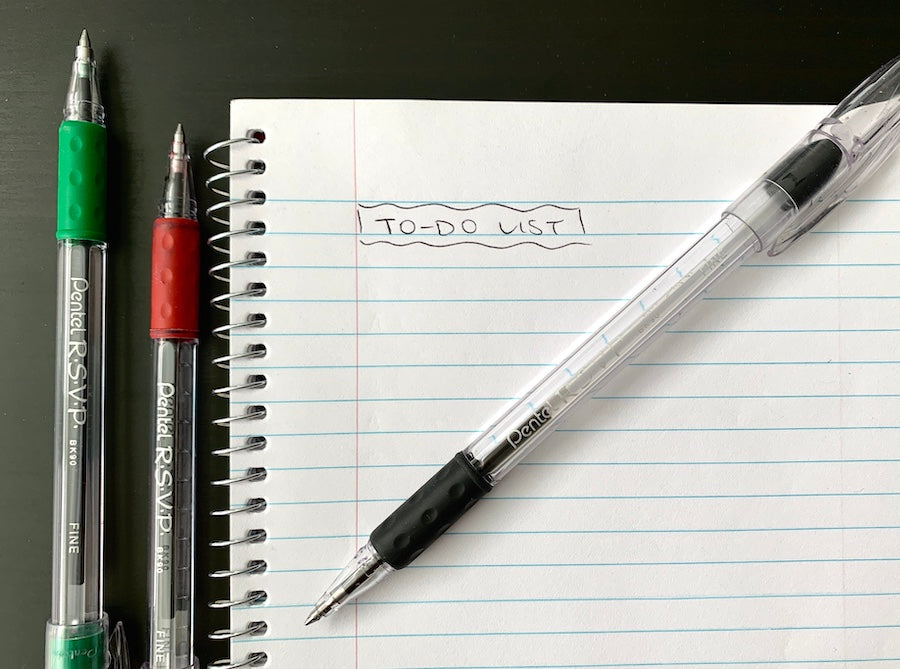
9. Pentel - RSVP Fine Ballpoint pen
Okay, so these pens are my favourite pens to use for just writing, but it is not ideal to use as a drawing pen (nor really is any ballpoint pen). The ink is neither lightfast nor archival, and although the ink didn't smear with water, it is also not waterproof.
The pen smudges slightly when erased, and the pigment is shiny and on the blue side. When applied on top of watercolour, the ink is streaky and faded.
Verdict: Amazing for writing, and cheap. If you're in a bind and only had this to sketch with it would be fine, but it's definitely not for use in paintings.
10. Winsor and Newton - Fineliner
This is a water-resistant pen, not waterproof, and so I waited a bit longer to paint over top of this than the other pens.
The colour of this is a rich matte black, and I'm impressed that it still keeps a strong colour after erasing. It does take a little more time to dry, as it smudged very easily. It writes very smoothly, and the lines are uniform.
Verdict: The colour of this is rich, and I would easily use this pen for fine detail in my projects. This would be a very suitable pen for painting on top of watercolour.
11. Pilot - Drawing Pen
This pen feels great in my hands, and the ink is nice and smooth and easy to control. It does not specifically say that it is archival, though it does say light-resistant and water-resistant on the website.
The pigment held up well with plain water, but when I put watercolour on top of it it did make the paint seem more faded and discoloured. I would recommend letting this ink dry for a longer period of time before painting on top.
Verdict: This would be an excellent pen to put on top of watercolour, or just for pen illustrations. Very smooth to write with, and not as expensive as the other pens.
INKS
1. Winsor and Newton - Black Drawing India Ink 951
This is currently my go-to ink and what I use on all of my current paintings. I absolutely love how black this ink is, and it holds up well against erasing. It is also archival, and waterproof.
Although the ink does take longer to dry (not surprising) and is prone to smudging, so allowing it to dry for a few minutes is well worth the wait. It looks great under and on top of watercolour paint.
I have noticed that if you use a semi-transparent or semi-opaque watercolour it does appear muted, but that happens with most (if not all) pens/inks.
Verdict: This is a wonderful product for drawing and with use in watercolour.
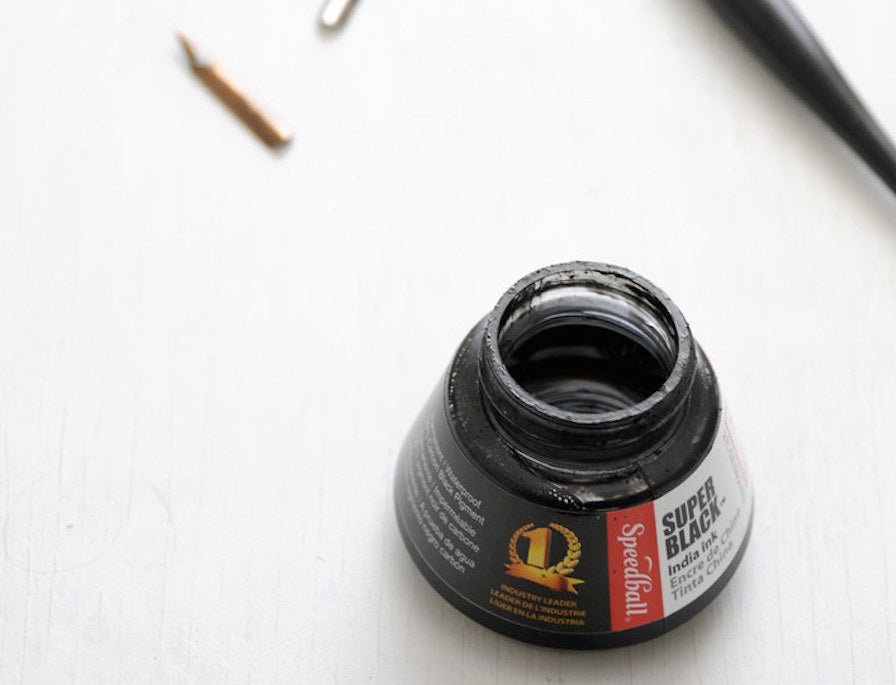
2. Speedball - Super Black India Ink
This has a rich pigment to it, and it brushes on smoothly with a brush or dip pen. This ink is supposedly waterproof, however, it did bleed quite a bit when I tried putting water on top, after waiting about 3 minutes.
To see if it was just the ink needing more time to dry, I waited a full 30 minutes before applying the watercolour on top, and that did the trick. After drying, this ink didn't budge an inch when I erased it either.
Verdict: If you have the patience (which I clearly don't) and can avoid smudging this ink while it or your watercolour is drying, it will yield very rewarding results.
3. Waterproof Higgins - Black India ink
I am a tad disappointed with this ink, and it's not because my dog is named Higgins and I wanted it to do well 😉
This ink is not as dark as the two inks above, and it fades a bit after erasing. This ink is fade-resistant, but I could not find anything mentioned at all about it being truly lightfast or archival.
On their website it mentions that this particular ink requires a 12-15 minute drying time, however, I found it dried fine in about 5 minutes. If you do accidentally smudge, they will be ugly "blotchy" smudges. So be aware!
This ink also seemed to make the watercolour react oddly when I painted over top; it kind of seems like the pigment in the watercolour was pulling away from the edges of the ink.
Verdict: Although it is the cheapest of these options, I would "splurge" and spend the extra $1-3 to grab a better ink.
4. Daler Rowney - Black Acrylic Ink
This is an acrylic ink rather than an India ink, and as soon as I started writing with this I could feel the difference. Acrylic inks flow lighter than water, and the fluidity and smoothness of the ink were apparent.
It is deeply pigmented, with a beautiful rich black. It did not lift off the page after I erased it, and the ink was dry enough to apply watercolour onto it after 6-8 minutes.
Verdict: I am very happy with how fluid and pigmented this ink is and will be looking for ways to incorporate it into my work.
Final Verdict
As mentioned earlier, this review of pens and inks is by no means extensive, but I do hope it gives you an idea and comparison of what common options are out there and what may suit your work best.
If I were to recommend my top 2 choices for pens, it would be the Sakura Pigma Micron Pen and the Winsor and Newton Fineliner pen. They both have excellent pigmentation and are archival (and therefore lightfast, waterproof, UV-resistant, etc). They come in many sizes, and the pens feel solid and comfortable to hold for those long drawing sessions.
The Pilot Drawing Pen was a close runner up and I will likely use this if I want subtle black lines underneath the watercolour, as well as for urban sketching.
Although I didn't review nearly as many inks, I was quite impressed with the Speedball Super Black India ink and the Daler Rowney F.W. Black Ink Both have beautiful rich black pigmentation, hold up well to erasing, and look great below or above watercolour.
And there you have it! Please let me know if you would like me to review other pens and inks in the comments below, or if you have any questions about what you currently have. I'm happy to help.
Happy drawing!
 Andie Lafrentz has been working as an artist full-time since August 2019, after she quit her job at a tech company. Through watercolour and ink, she combines bright, lively colours and her love of travel to create pieces that express the way she sees the world.
Andie Lafrentz has been working as an artist full-time since August 2019, after she quit her job at a tech company. Through watercolour and ink, she combines bright, lively colours and her love of travel to create pieces that express the way she sees the world.




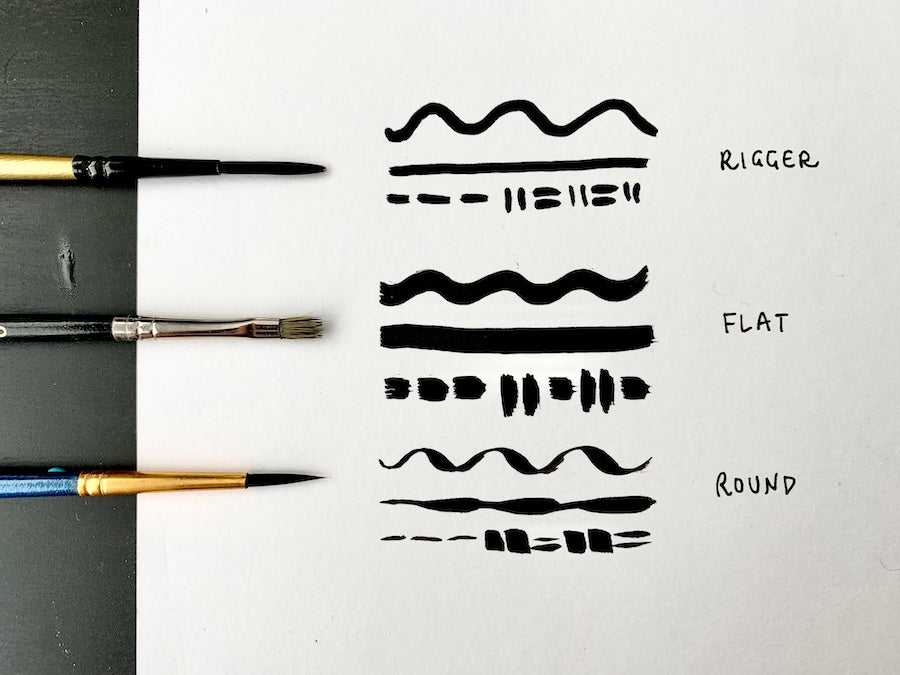
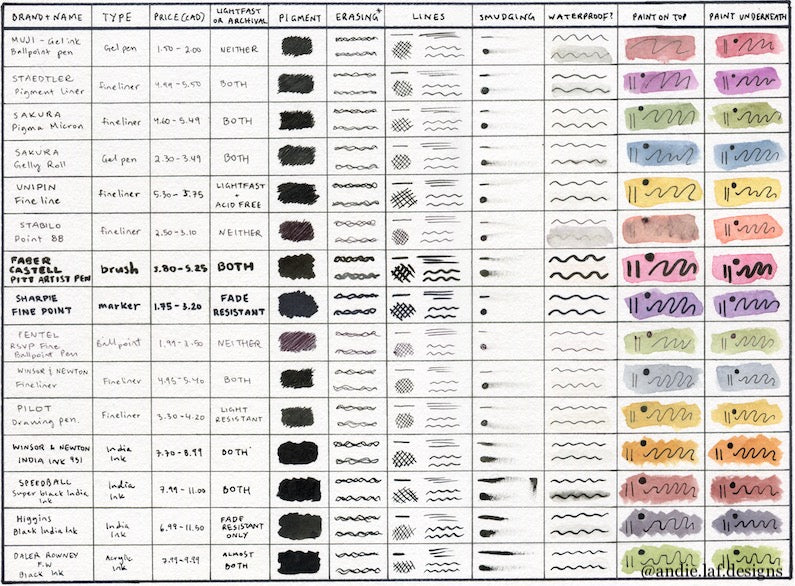






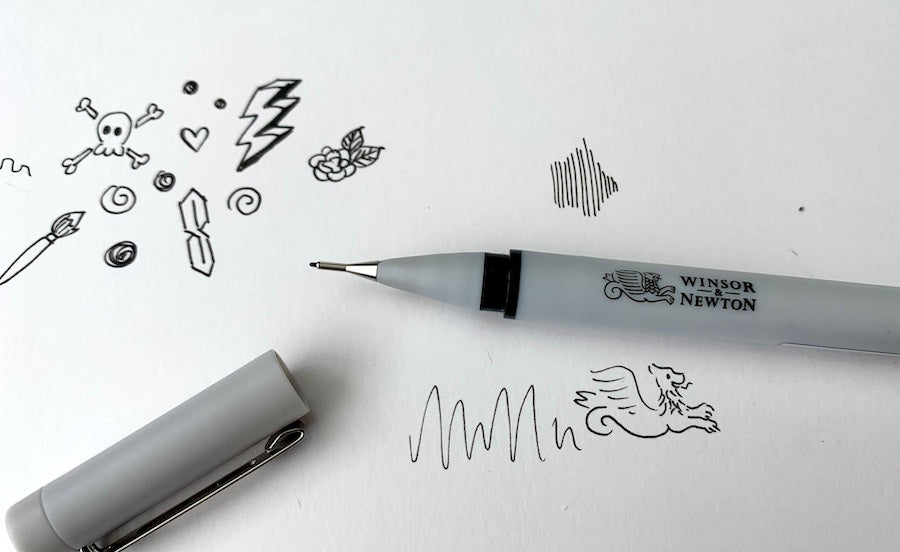
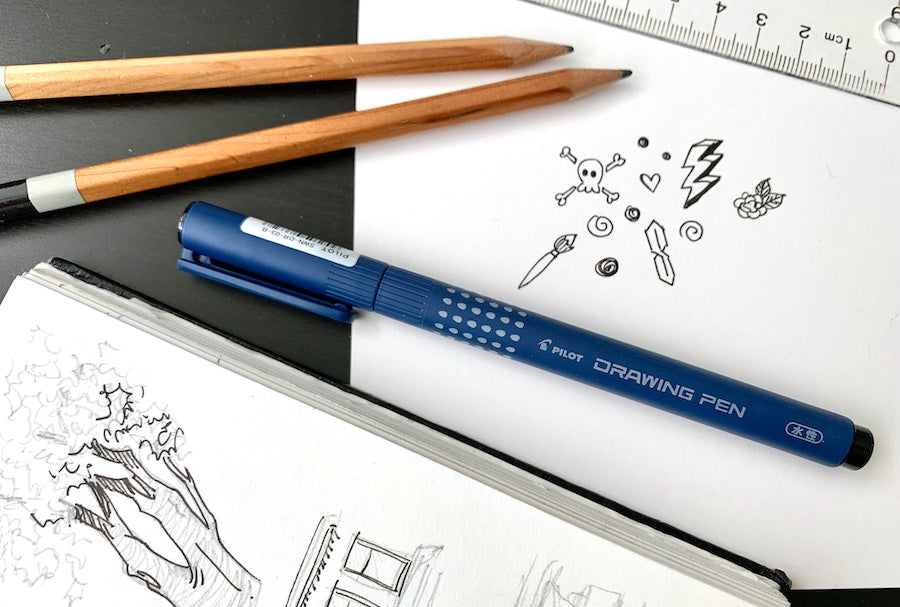
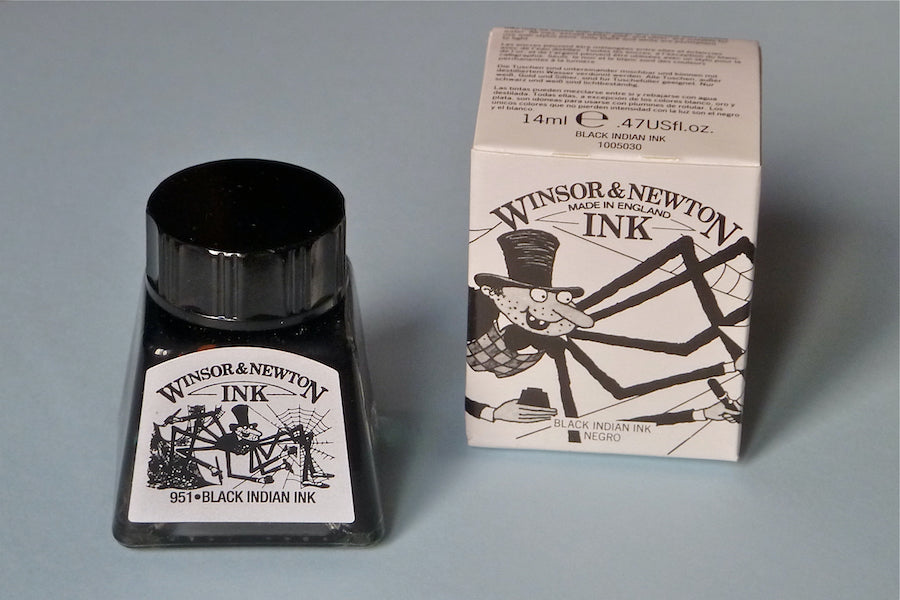
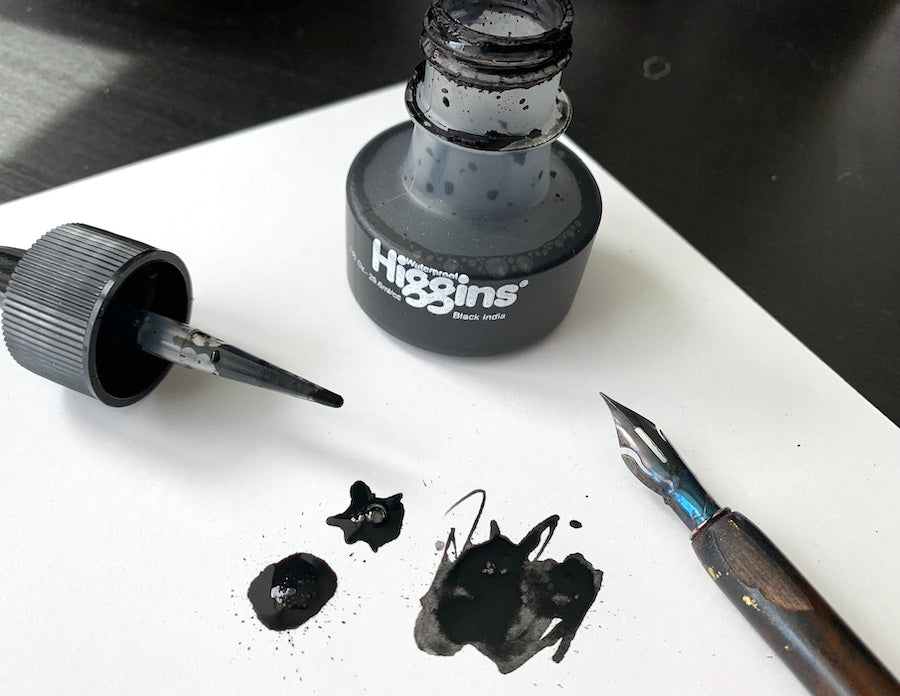



This was wonderful! One more pen I was hoping you might’ve included is the Pilot G2. It’s kind of a classic favorite, “the perfect pen” according to some people. Thank you!
Amazing! Very helpful! Thank you so much dear!
This was a very helpful post, thank you so much for your incredible work!! The chart you made is brilliant, and this article made it very easy to understand the many variables that go into choosing pen/ink options. Thank you again!
Very Good information, Thank you
This blog is really very helpful and knowledgeable. Thanks for sharing your ideas. Keep up the good work and take care! 💖